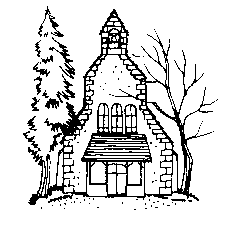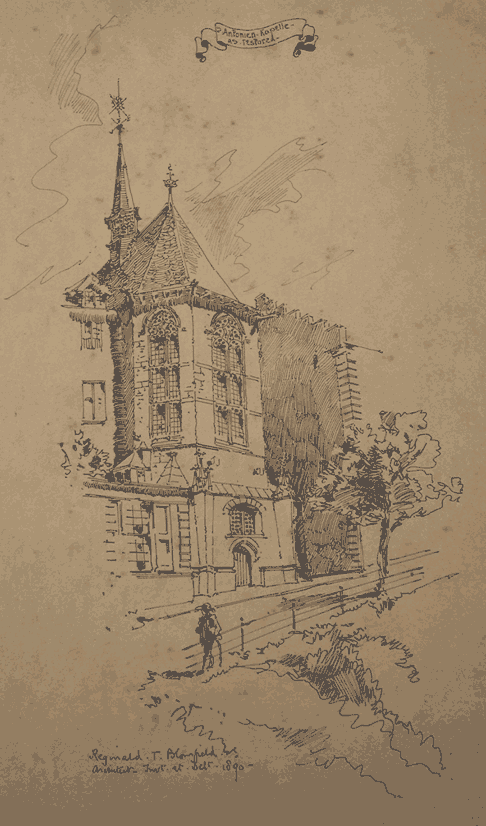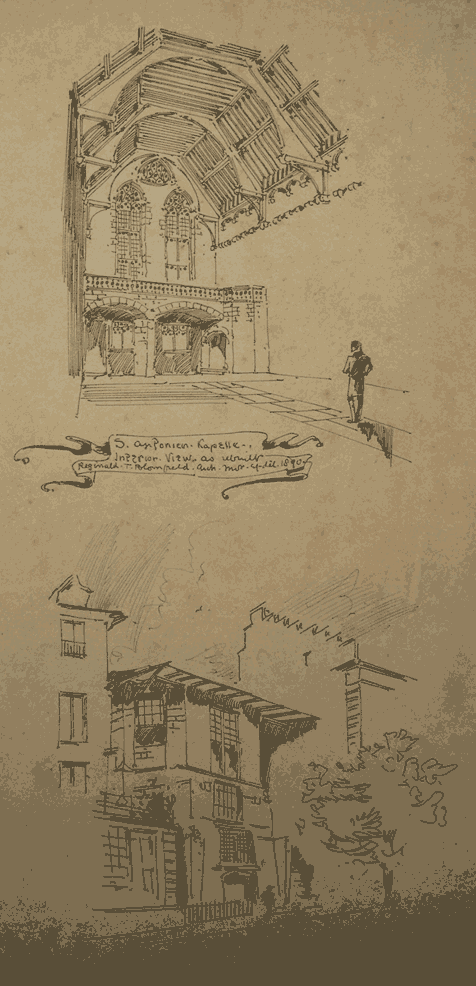
 | St Ursula's Church, Berne, Switzerland |
In 1889, the opportunity arose of using the former Antonierkirche in Postgasse. The British Ambassador, Sir Arthur Leveson Gower, entered into negotiations. He reminded the city authorities of the earlier grant in 1857/8 of the site at Hirschengraben.
The city finance director was not impressed. He replied that that had been an offer by the Canton, and not by the City, and having been declined thirty years before, had doubtless lapsed. However the City was happy to put the Antonierkirche at Sir Arthur's disposition pour l'exercice du culte anglican, provided that the ground floor remained available as a fire station store. For an annual rental of Fr 600, or a purchase price of Fr 15000, l'honorable colonie anglaise de notre ville deviendra propriétaire d'un bâtiment que sa destination primitive rend éminemment propre à l'exercice du culte..
Sir Arthur was unhappy with this proposal. The proposal would have left the church as little more than the crypt. He commissioned the architect Reginald Blomfield to examine the site.
Reginald Blomfield reported as follows:

In accordance with the request of Mr Leveson Gower I have examined the remains of the S Antonien Kapelle & the alternative site suggested for a new English Church at Berne. I have to report herewith the result of my examination.
The site suggested for a new church lies across the river opposite to the Cathedral. It has no particular advantages of position; as moreover any church built here, would be very conspicuous, it would be very inadvisable to put up a mean and insignificant building. The amount of the money likely to be raised would only admit of the simplest possible building if such building is to be entirely new, & I should therefore advise strongly against the idea of building a new church on this suggested site.
In the remains of the S Antonien Kapelle there are on the other hand great possibilities. The building probably dates from the end of the 15th century. At the W end [the double arcade to the street and the groining over the pathway under the old Gallery floor, is in a fair state of preservation. One of the old doorways remains, with an opening beside it either for a window or for another doorway. Under the apse at the E end there is an extremely interesting crypt which once communicated with the church by a newel staircase at present blocked up. The crypt is groined in eight bays, with semi-circular ribs starting from a central circular pier. To the left of the entrance is a small aumbry. The entrance from the outside was probably cut through the wall in the 17th and 18th centurys (sic), & the brick filling in to the groining is of this date, or later. The stonework at this end of the church has been a good deal injured, but the walls are so solid, that it would not be necessary either to strengthen or rebuild them. The building at present is cut up into four stories and an attic, which are used for the storage of wood, grain, lumber, etc.; the ground floor being occupied by the Town fire engines. On the first and third floors there are remains of frescoes. Those in the first floor, relating to the life of St. Antony, are very much injured, but those on the third floor appear to be still in a good state of preservation behind the plaster. These frescoes were probably painted very soon after the building of the original chapel. There are no remains of the original roof, and only the jambs of the old window at the W end*.] (A note adds: "Further on he remarks:" and a line is drawn to the section marked with an asterisk below.)
For the following reasons I should recommend the rebuilding of the S Antonien Kapelle.
(1) Economy:- It would be possible to build on the existing remains a picturesque church at a third of the cost of an entirely new building. The side walls are already there and quite 3/4 of the E & W walls. The Crypt would make an excellent Vestry and Meeting-room. The structural part of the Gallery at the W. end already exists & the joists & boarding of the existing building would provide all the timber necessary for the roof of the new building.
(2). The remains of the old work are exceedingly picturesque & the details at the W. end & in the Crypt & in the frescoes on the S. Wall are of such value that in purely Artistic & Archaeological grounds an effort should be made to reserve (sic) them from the decay into which they are falling.

(3) The site at the E. end has great natural advantages. It stands on the side of a Hill, & this & the fact that the Crypt below the floor is above the ground level make it possible to build a dignified E. End at a very moderate cost. This site would also be more convenient for visitors staying in the Town than the site suggested on the other side of the river.
(4) *The S Antonien Kapelle has historical & artistic associations which would not attach to an entirely new building.
In regard to the treatment, I would propose to insert a new doorway to the crypt, three new windows to the apse, & two new windows, with either a circular or curved triangular window, filled in with tracery, to the W. gable. The roof would be of open timber. The old gallery at the W. end would be restored; the choir would be raised two or more steps above Nave, & there would be three more steps to the Sanctuary. The floor under seats would be wood-block (for parquet) on concrete; the passageways paved with hard local stone. French marble from (?Bebroyo) might be used for the floor of the Choir & the Sanctuary, if not too costly.
I estimate ("roughly" written and crossed out twice!) the amount of this work at £1,800 English Money. I understand, however, that that Swiss prices for labour and material are some 15 percent lower than English. It is therefore likely that the work might be done for less than the sum named."
Reginald. F. Blomfield.
On 30 December 1889, the City Finance director offered the chapel sans aucune restriction for Fr 25000. The offer was valid until the end of the following year. Unfortunately, the Anglican community was unable to raise the money.